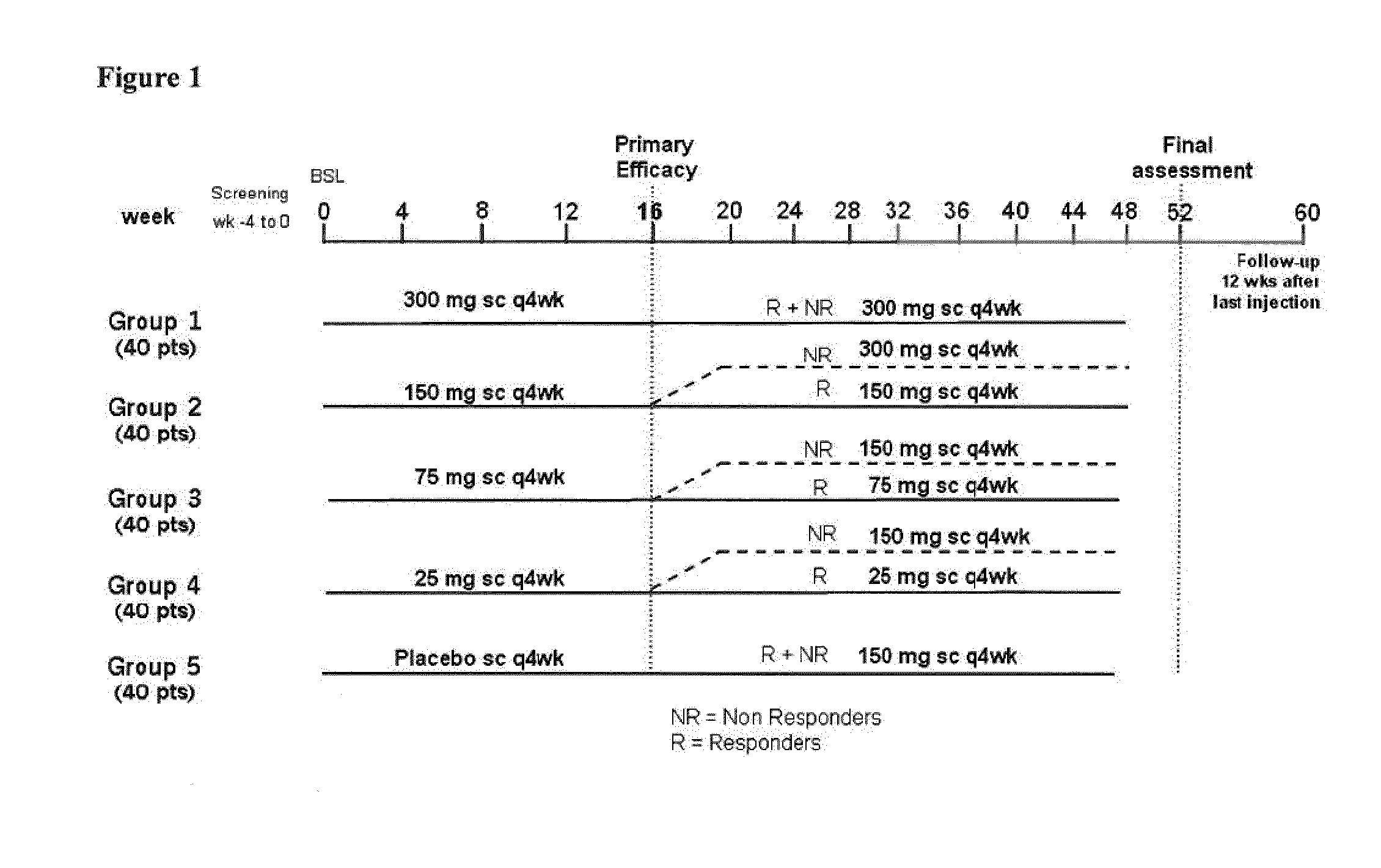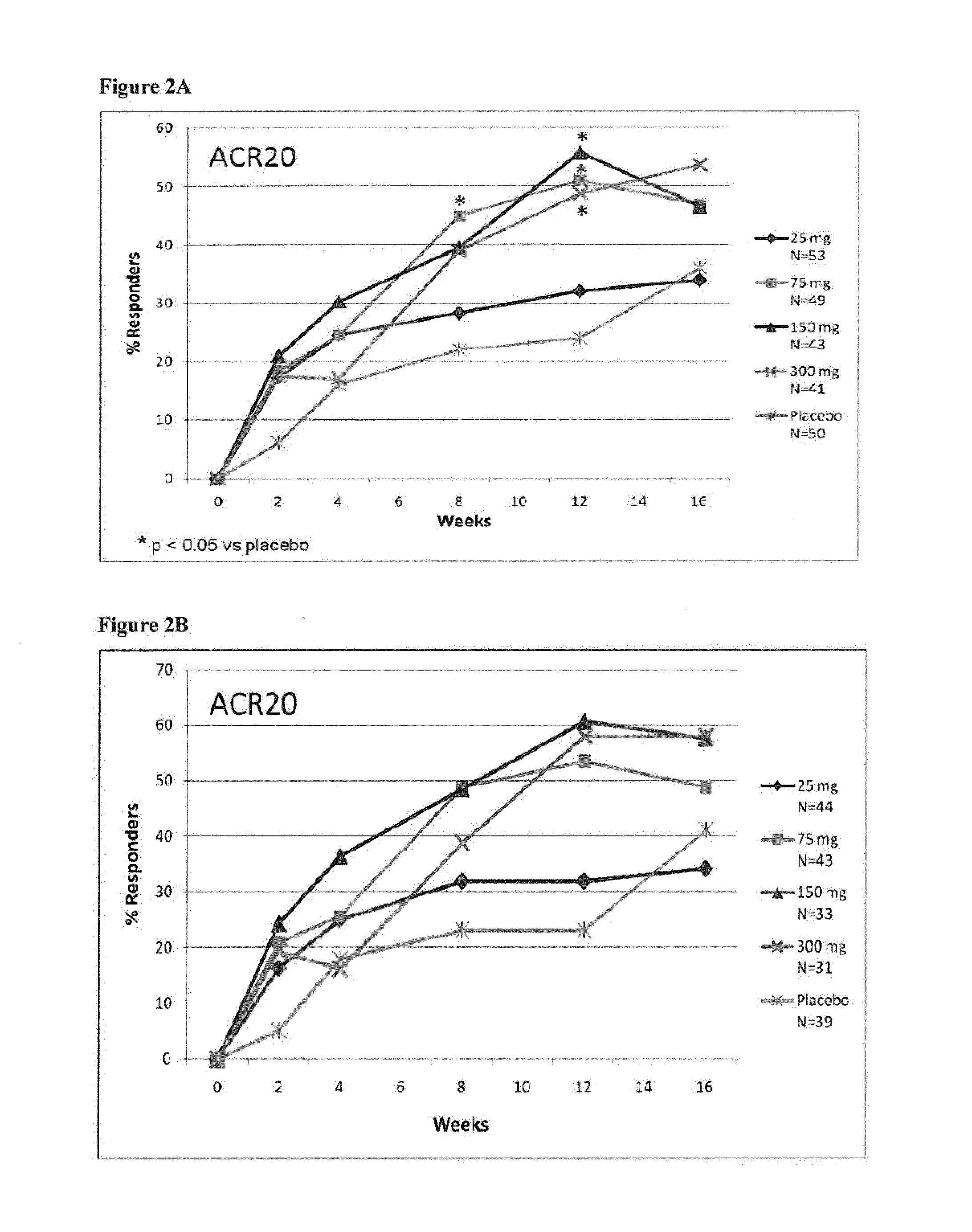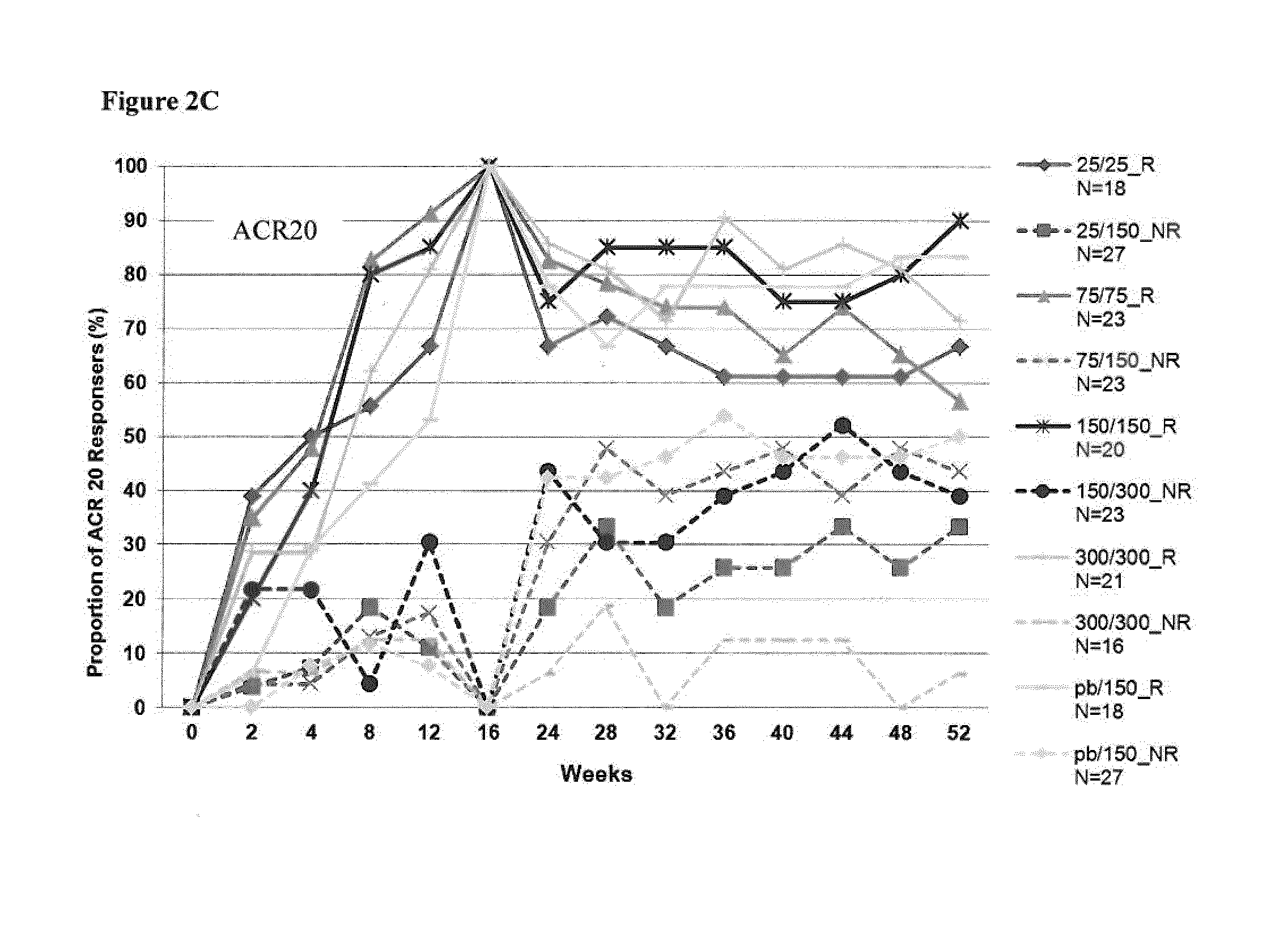Methods of treating rheumatoid arthritis using il-17 antagonists
a technology of rheumatoid arthritis and il-17, which is applied in the field of methods for treating rheumatoid arthritis, can solve the problems of limiting the prolonged use of il-17, limiting the clinical manifestation of ra, and limiting the initial response to complete remission or loss of response, so as to achieve rapid improvement of clinical manifestations of ra, inhibit interleukin-17a activity, and the effect of improving the clinical manifestation
- Summary
- Abstract
- Description
- Claims
- Application Information
AI Technical Summary
Benefits of technology
Problems solved by technology
Method used
Image
Examples
example 1
Use of Secukinumab to Treat Rheumatoid Arthritis (RA) (CAIN457F2201)
example 1.1
Study Design
[0270]The study population consists of a representative group of patients (male or non-pregnant, nonlactatin females) of at least 18 years of age, fulfilling ACR 1987 revised classification criteria for RA for at least 3 months. Eligible patients were required to present active RA defined by ≧6 out of 28 tender joints and ≧6 out of 28 swollen joints, and hsCRP 210 mg / L OR ESR ≧28 mm / 1st hour (mm / h) at the time of randomization to assure ability to detect response to treatment using ACR criteria. Eligible candidates were on MTX for at least 3 months and at selection were currently treated with a stable weekly dose of MTX (27.5 mg / week-≦25 mg / week) for at least 4 weeks.
[0271]Adult RA patients (n=237) on methotrexate were randomized equally to receive monthly s.c. injections of secukinumab 25 mg, 75 mg, 150 mg, 300 mg or placebo. Patients with previous exposure to biologics were included in all cohorts (18-22%). The primary end point was the proportion of patients achieving...
example 1.2
[0295]To test superiority of secukinumab treatment groups over placebo, the ACR20 responder rate (proportion) was compared against placebo for each of the secukinumab-treated groups based on a logistic regression model with treatment, center and baseline DAS28 as covariates. The DAS28-CRP change from baseline was analyzed using an analysis of covariance (ANCOVA, SAS PROC MIXED) fixed effects model with treatment as main effect and correcting for the covariates center and baseline value. All statistical tests for pairwise comparisons of secukinumab treatment groups vs placebo were performed at two-sided 5% significance level. The method of last observation carried forward (LOCF) was used for missing values for efficacy variables. Figures were produced presenting response over time or at specific time points up to Week 16 (or Week 52, as appropriate). Of note, for figures presenting results up to Week 52, only data from patients continuing at Week 24 were included....
PUM
| Property | Measurement | Unit |
|---|---|---|
| Length | aaaaa | aaaaa |
| Time | aaaaa | aaaaa |
| Time | aaaaa | aaaaa |
Abstract
Description
Claims
Application Information
 Login to View More
Login to View More - R&D
- Intellectual Property
- Life Sciences
- Materials
- Tech Scout
- Unparalleled Data Quality
- Higher Quality Content
- 60% Fewer Hallucinations
Browse by: Latest US Patents, China's latest patents, Technical Efficacy Thesaurus, Application Domain, Technology Topic, Popular Technical Reports.
© 2025 PatSnap. All rights reserved.Legal|Privacy policy|Modern Slavery Act Transparency Statement|Sitemap|About US| Contact US: help@patsnap.com



